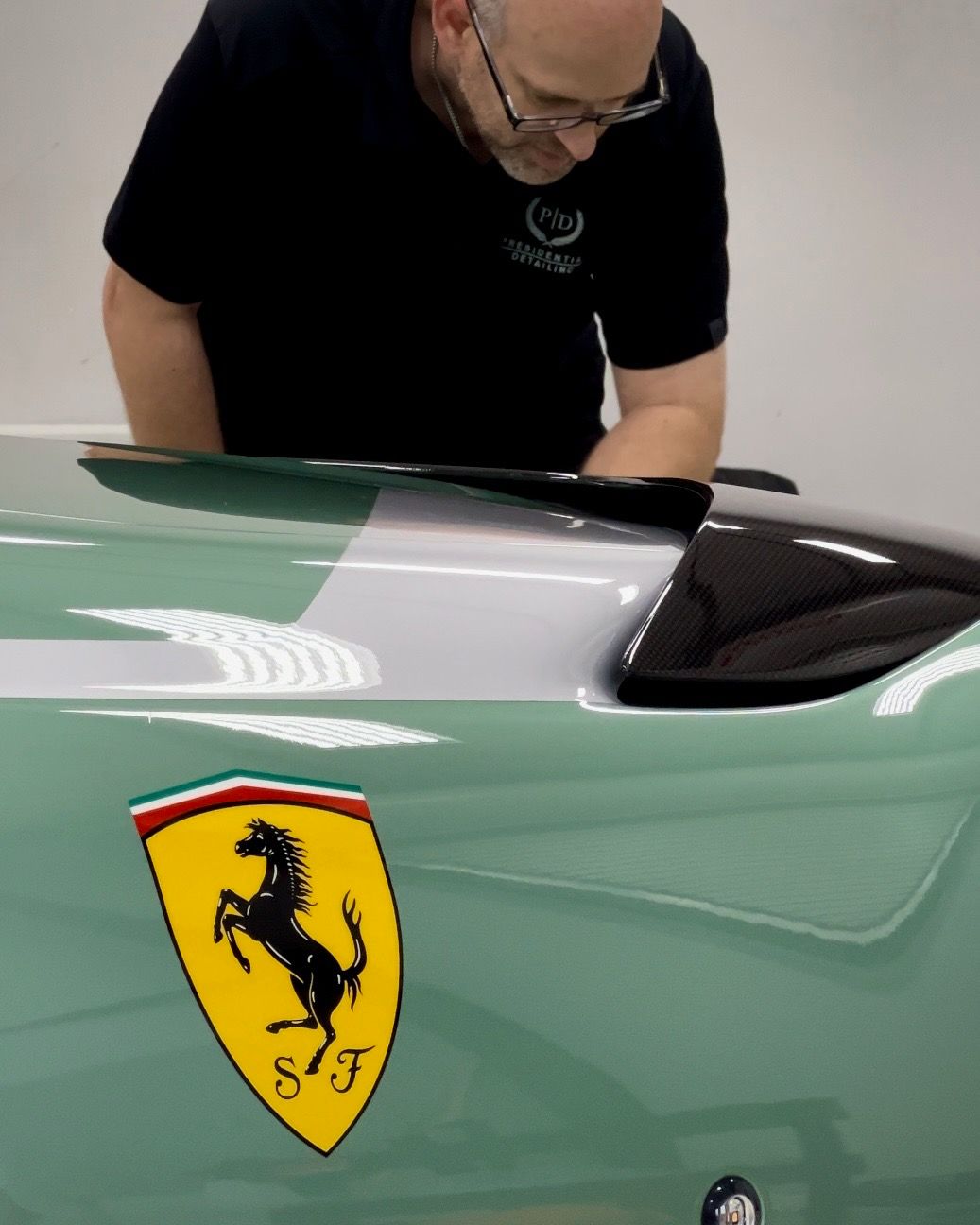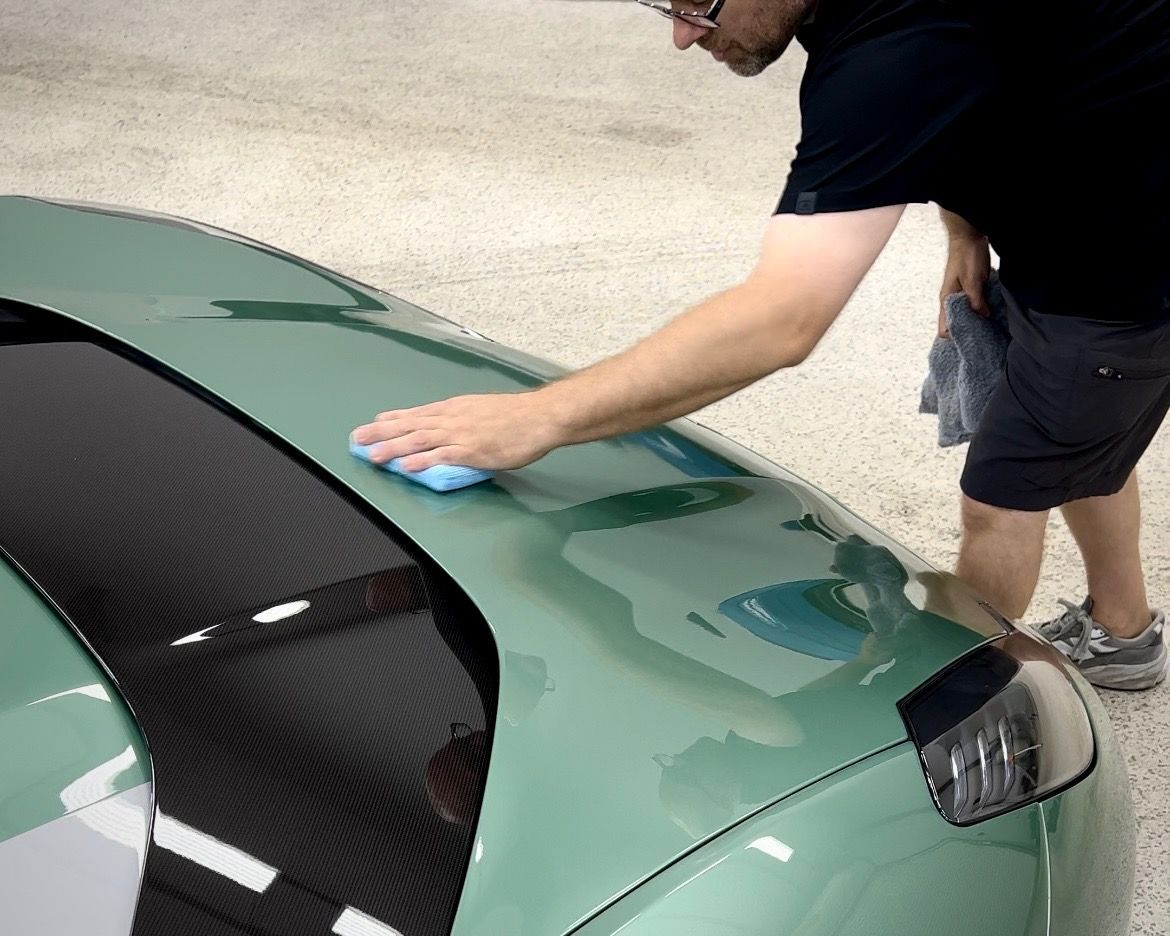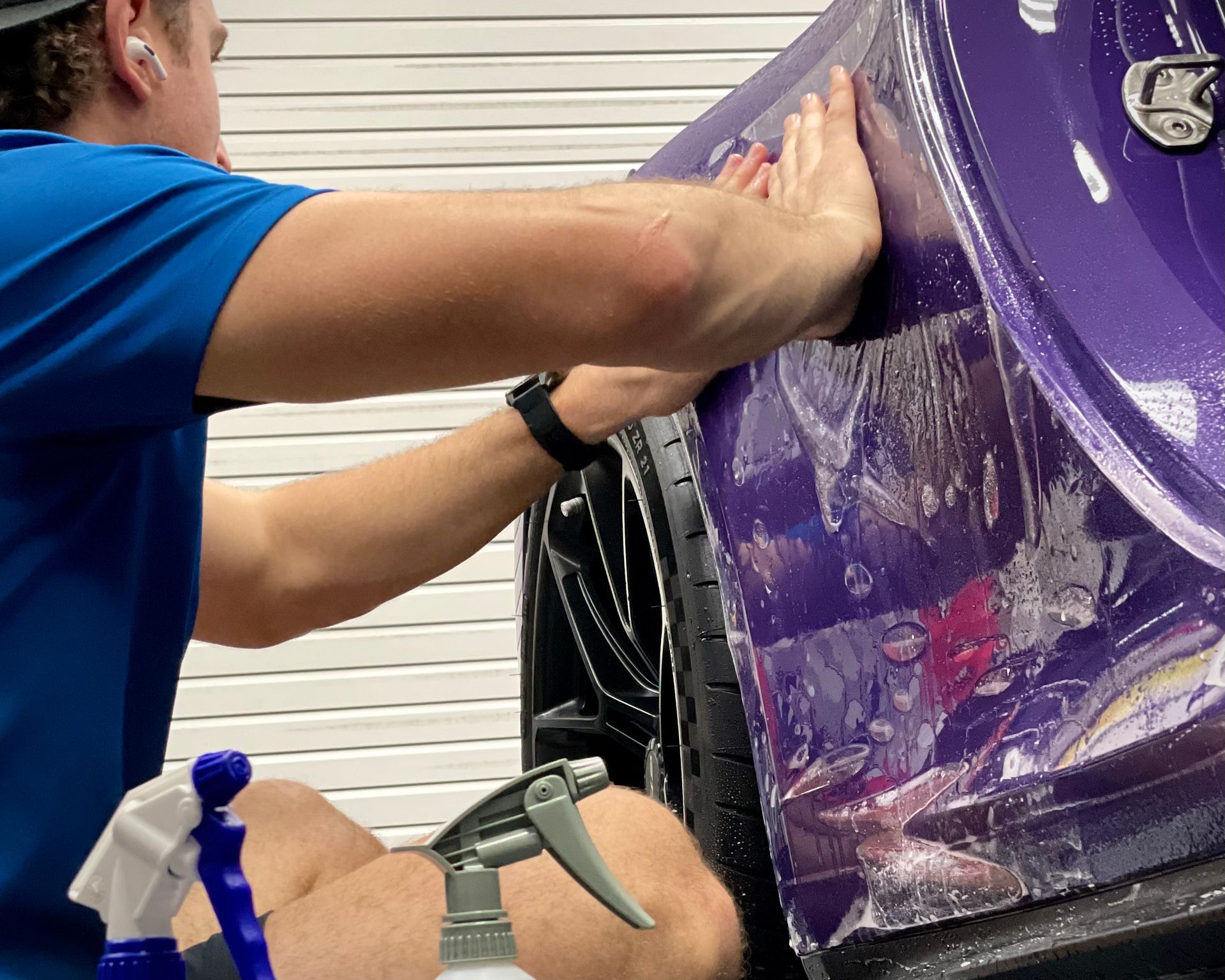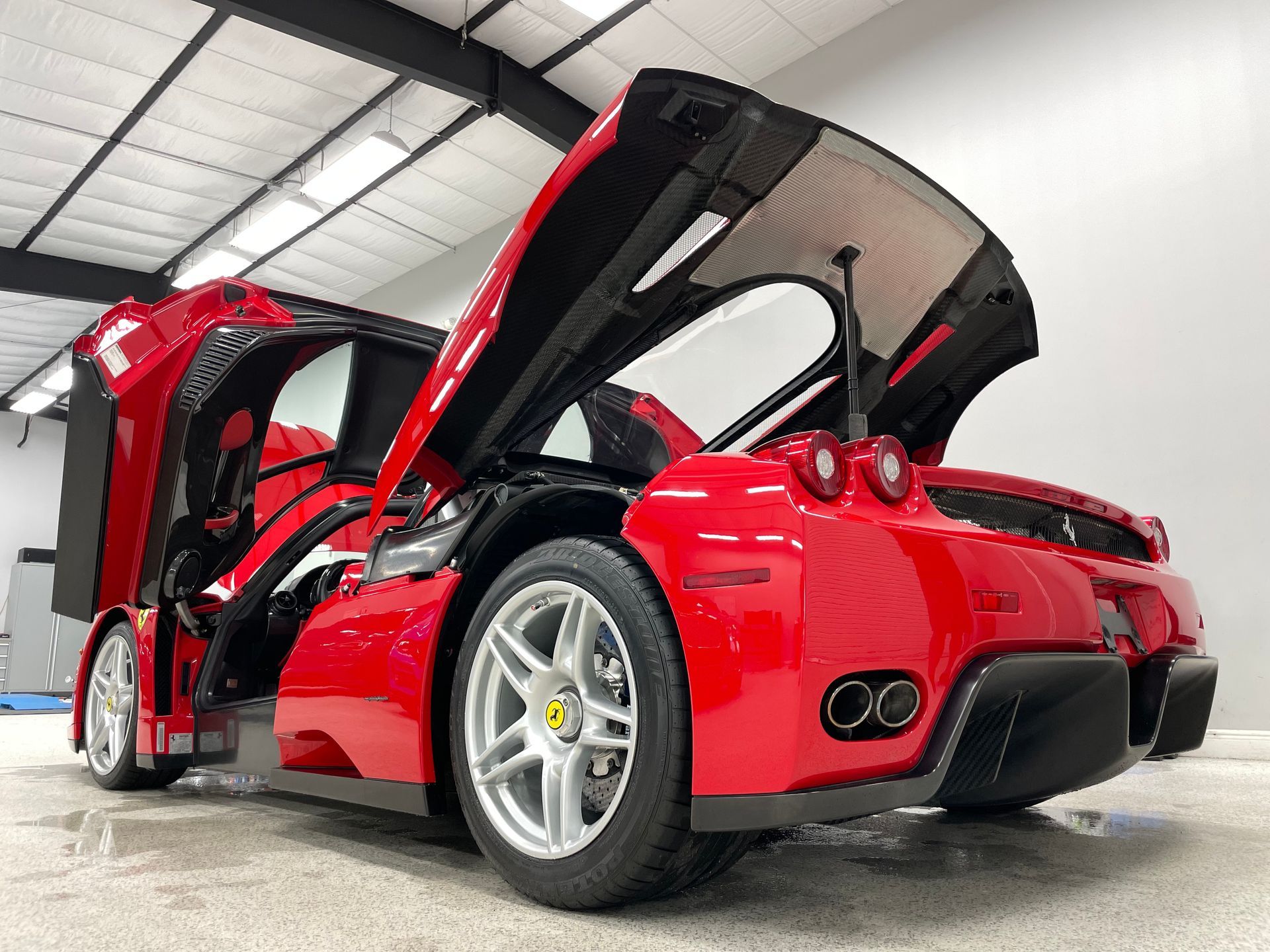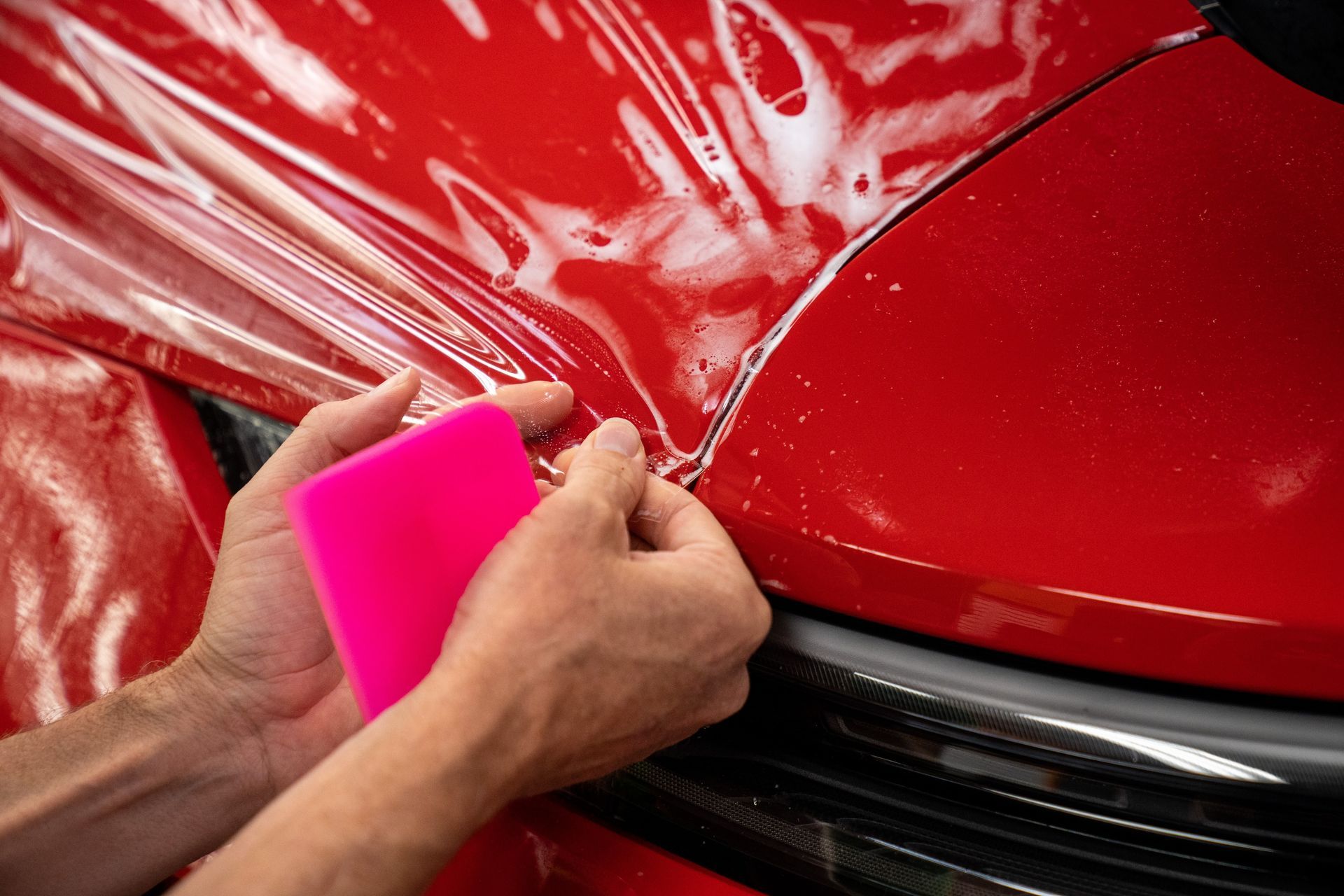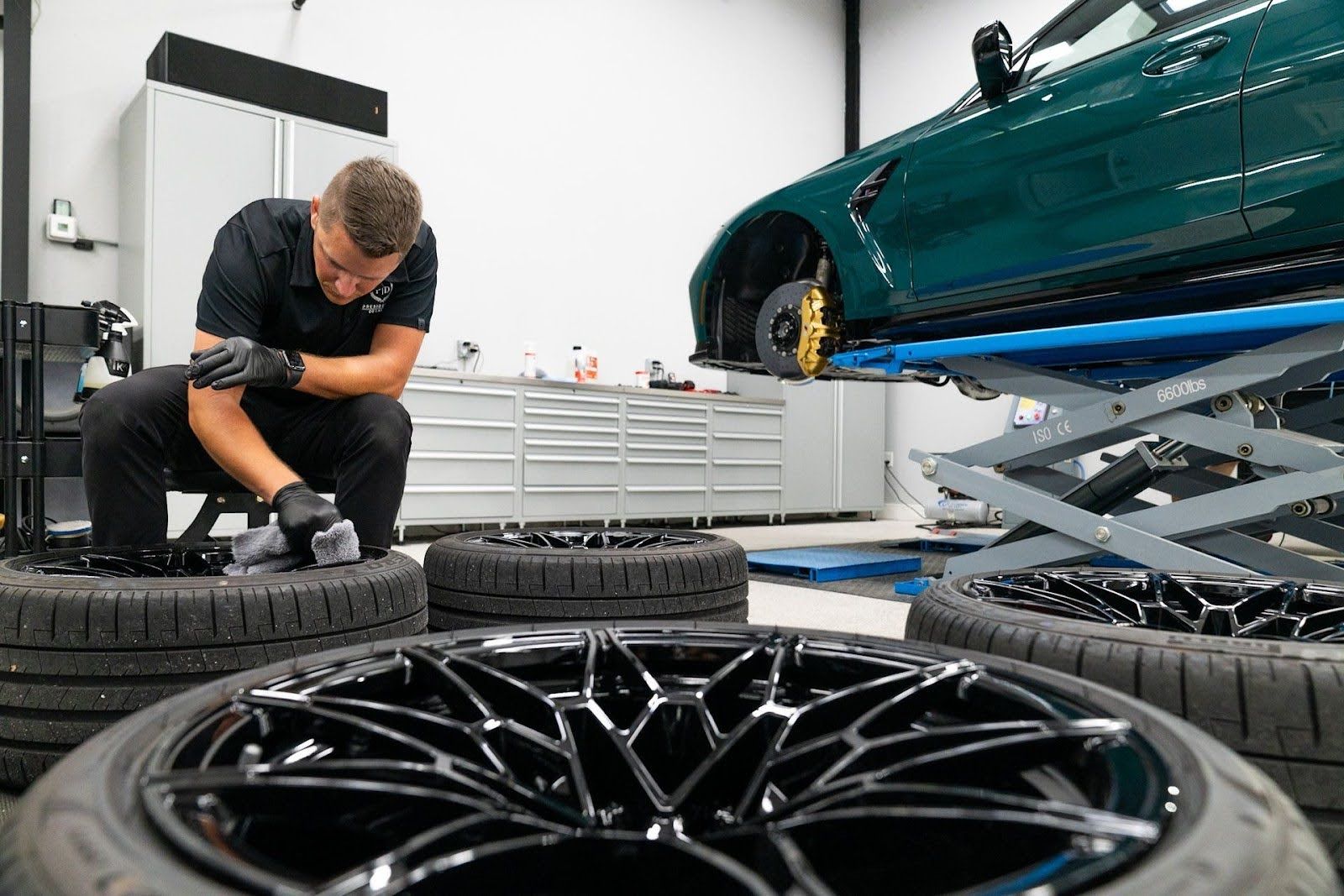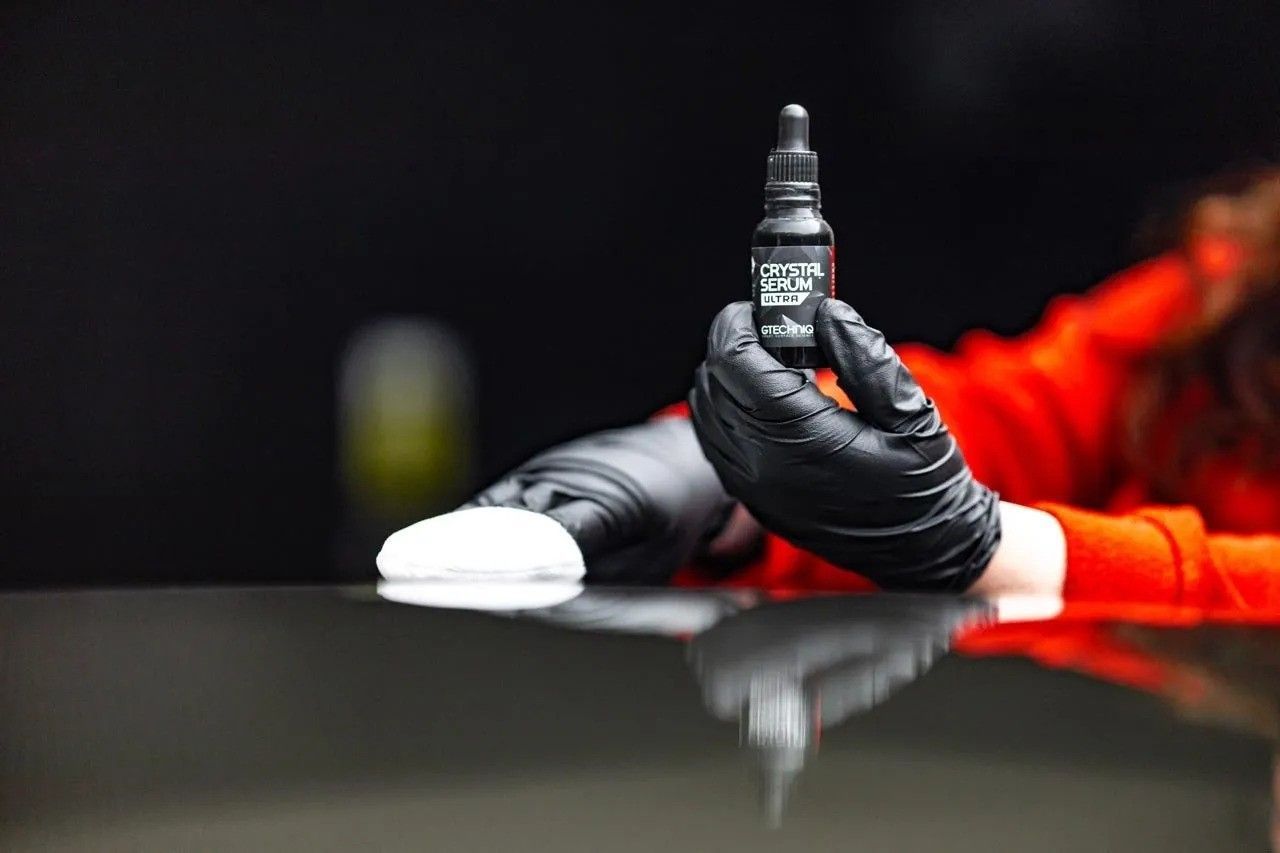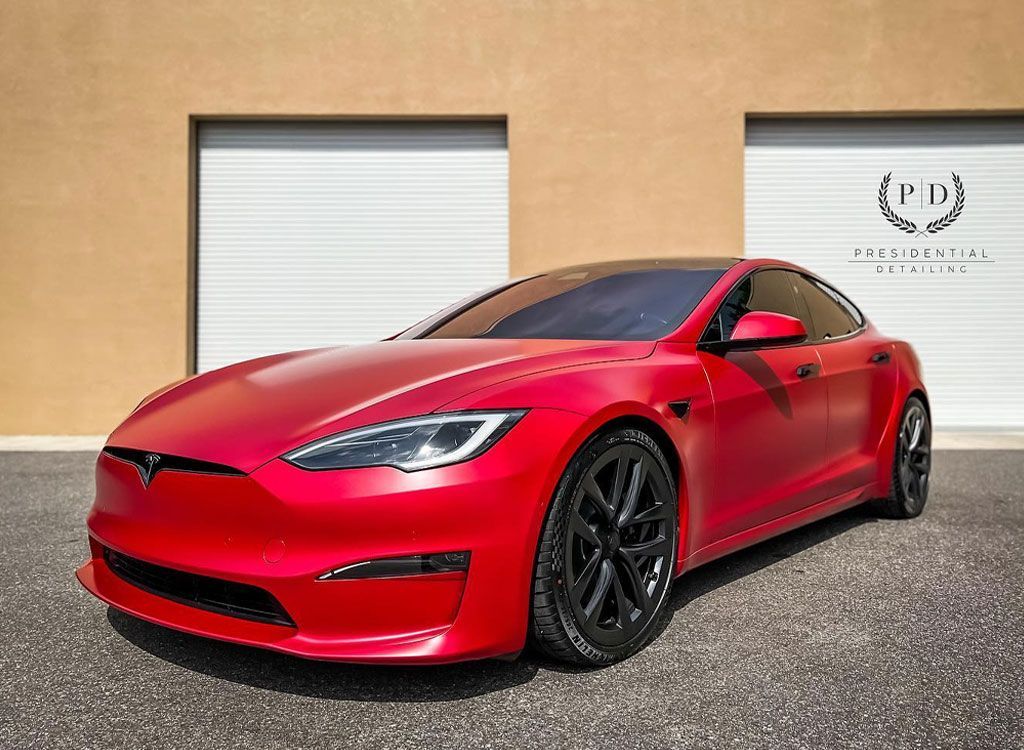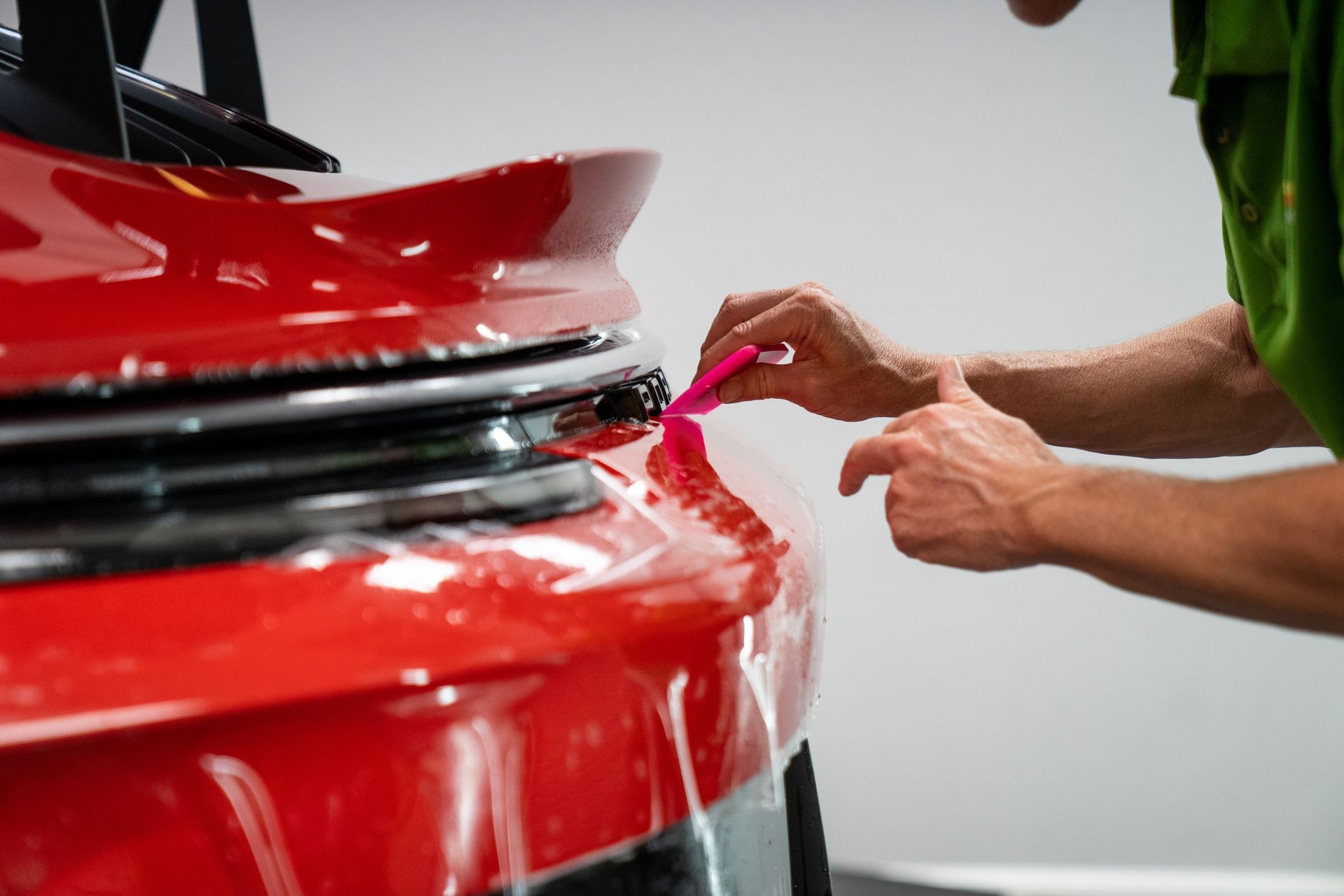How Professional Ceramic Coating Reduces Frequent Washing: The Benefits for Your Car
CALL (813) 723-9679
GET A FREE ESTIMATEWhen it comes to keeping our cars looking sharp, the battle against dirt and grime can feel like a never-ending chore. But what if there was a way to make that struggle easier? Enter professional ceramic coating—your vehicle's new best friend. This innovative treatment not only makes your car shine but also creates a protective layer that helps keep it cleaner for longer. Imagine spending less time washing and more time enjoying the open road! In this article, we'll dive into how ceramic coating can change your car care routine, offering benefits that go beyond just appearances.
Professional ceramic coatings create a durable, hydrophobic layer on the vehicle's surface that repels water and dirt, making it easier for contaminants to slide off during rain or washing. This protective barrier not only enhances the car's shine but also reduces the accumulation of grime and debris, allowing for longer intervals between washes, ultimately saving time and effort for vehicle owners.
The Advantages of Ceramic Coating
One of the key benefits of ceramic coating is its ability to protect against various environmental damages. This includes shielding your car from harmful UV rays, which can fade colors and degrade surfaces over time. Think about those scorching summer days when sunlight beats down relentlessly; a good ceramic coating acts as a barrier, reducing UV-induced damage by an impressive 50%, according to a study published in the Journal of Coatings Technology and Research. It doesn't stop there—this coating also provides resistance against natural elements, such as bird droppings, sticky tree sap, and even acid rain. Each of these hazards poses a threat to your vehicle's paint, but with ceramic coating, you’ll have peace of mind knowing that your car is well protected.
Beyond protection, another notable advantage is the enhancement of your car’s visual appeal. When you apply a ceramic coating, you're not just adding a layer of defense; you’re elevating the aesthetic charm of your vehicle. The nano-ceramic technology produces a stunning glossy finish that offers a mirror-like sheen. It gives the impression that your car has just rolled off the showroom floor—making it look brand new for much longer. This glossy finish is not merely cosmetic; it also reflects light better, enhancing the color depth and vibrancy, which contributes to overall visual allure. A car with such a polished finish will naturally attract more admiring glances.
However, while aesthetics and protection are crucial, there's an additional factor that sets ceramic coating apart: long-term cost-effectiveness. You might initially be hesitant when faced with the $1,000 to $2,500 price tag for professional installation of ceramic coatings. Nevertheless, consider it an investment rather than an expense. Over time, this protective layer significantly reduces the frequency of washing your vehicle—by up to 80% compared to untreated surfaces—and diminishes the need for polishing as well. This means spending less on labor and products dedicated to vehicle maintenance.
Furthermore, preserving your car's appearance not only keeps it looking impeccable but also enhances its resale value in the long haul. While the upfront costs may appear steep, the savings on detailing and maintaining a pristine exterior can accumulate substantially over time. As we explore further, we will uncover how this remarkable coating safeguards your vehicle's paint from everyday wear and tear.
How It Protects Your Car's Paint
At its core, ceramic coating acts like a hardened shield over your car’s factory paint, changing the way your vehicle interacts with the environment. This isn't just any ordinary layer; it's a sophisticated liquid polymer that chemically bonds with the paint underneath.
When applied correctly, this ceramic coating forms a durable barrier that withstands various environmental challenges, such as UV rays, dirt, and pollution.
Science Behind the Shield
The magic lies in the hydrophobic properties of the ceramic material. When coated, water doesn’t merely sit on the surface of your car; it beads and rolls off effortlessly. This means that when rain or even just moisture comes into contact with your vehicle, it carries away tiny dirt particles and contaminants instead of allowing them to settle and etch into the paint. This process keeps your car looking cleaner and dramatically reduces the rate at which your paint job can wear down—essential for prolonging its life without frequent touch-ups or repairs. Studies have shown that vehicles treated with ceramic coatings can stay cleaner for up to six months longer than those treated with traditional waxing methods!
With these protective features firmly established, let’s examine how these advantages manifest into less frequent washing and why they are so beneficial for those wanting an easier upkeep strategy for their cars.
Reduced Washing Frequency Explained
The magic behind ceramic coatings lies in their hydrophobic properties. Essentially, when water hits the surface of a ceramic-coated car, it beads up and rolls off instead of spreading out and clinging to the paint. This process repels not just water but also a significant amount of grime and contaminants. Much like a duck's feathers repel water—each droplet slides off effortlessly—a well-coated vehicle allows mud, dirt, and other debris to wash away more easily. This characteristic creates an almost protective shield over your car's paint, minimizing the need for frequent cleaning.
How Hydrophobic Properties Work
Imagine cooking with a non-stick pan; when you prepare a meal, those spatters from sautéing can be wiped off with minimal effort. This is because the coating prevents food residues from sticking. Similarly, ceramic coatings create a slick surface that doesn't allow dirt and grime to cling stubbornly to your car. Instead of investing time scrubbing or pressure washing every time you see a speck of dirt, you can enjoy the convenience provided by this advanced technology.
With this level of efficiency, you might find yourself only needing to wash your vehicle every four to six weeks—far less frequently than the standard once-a-week schedule that untreated cars require. This translates into fewer trips to the wash and more time enjoying your vehicle without concern for its appearance.
Personal Anecdote
After applying ceramic coating on my sedan, I was genuinely astonished by the results. Previously, I found myself washing my car weekly, driven by concern over dust accumulation and muddy splatters after rainstorms. Now? I’ve managed to extend that washing routine to about once every three weeks! Freed from constant maintenance, I've been able to spend time in other pursuits while still showcasing a spotless car on weekends. The joy of not fearing every little raindrop is truly liberating.
Consumer Statistics
According to findings from CarCare.org's consumer survey, an impressive 75% of users noted that they washed their cars less often after opting for ceramic coatings. This figure reinforces the notion that investing in such a service both saves time and enhances the enjoyment of vehicle ownership.
With fewer washes required, maintaining the coated vehicle also becomes simplified. Not only does this provide practical benefits for owners regarding time management, but it also ensures their vehicles stay cleaner and shine longer between washes. As we consider these perks further, let's explore how these systems facilitate easier upkeep and detailing practices for car enthusiasts.
Simplified Maintenance and Detailing
When you invest in a ceramic coating, you unlock an entirely new level of simplicity when it comes to maintaining your vehicle's appearance. This protective layer serves as a barrier against various contaminants, so instead of worrying about whether your car is collecting dirt or grime, you can enjoy the peace of mind that comes with effective protection. A quick spray with detail aids between washes keeps your car looking luxurious with minimal effort. You might even find yourself taking pride in how effortlessly clean your vehicle remains, which is a joy few can fully appreciate until they experience it firsthand.
- Quick Detail Sprays: These sprays are perfect for those days when you notice a bit of dirt but don’t have the time or energy for a full wash; just a few sprays and a microfiber cloth will do the trick! This quick intervention can significantly reduce the amount of residue that builds up over time, making your next scheduled wash even more efficient.
- Fewer Efforts, Better Results: Think of ceramic coatings as a protective force field around your car. Unlike traditional waxing and polishing methods—which often require multiple products and endless hours—ceramic coatings act as an all-in-one solution. Instead of continuously layering waxes, which diminish over time, the ceramic coating makes your vehicle easier to care for while offering superior shine and protection from UV rays, dirt, and water spots. Consequently, you’ll find yourself spending more time enjoying rides or road trips rather than worrying about cleaning.
However, this ease of maintenance doesn't just come out of thin air; it invites you to consider an essential choice related to your vehicle’s care: whether to go for professional expertise or tackle it yourself for achieving these remarkable benefits effectively.
Professional vs DIY Application
When it comes to ceramic coatings, opting for a professional service often means entering into a different league of protection for your car's paint. Professionals are trained to ensure that each layer of coating is applied evenly and flawlessly, utilizing advanced tools and techniques that the average vehicle owner may not have. This level of care significantly enhances longevity, allowing the coating to withstand wear from environmental conditions. The average cost for a professional application typically ranges from $1,000 to $3,000, depending on factors such as the size and condition of the vehicle as well as the reputation of the service provider.
DIY Kits
On the flip side, DIY ceramic coating kits present an enticing opportunity for those looking to save a few bucks. Typically available at prices ranging from $50 to $150, these kits appeal to car enthusiasts who enjoy hands-on projects involving their vehicles. However, caution should be exercised here. If the kit is improperly applied—even slightly—it can lead to streaks, high spots, or uneven coverage that diminishes both appearance and protection against contaminants. It’s essential to realize that while DIY kits can work wonders in capable hands, they are best suited for individuals familiar with proper application techniques or those willing to accept some degree of imperfection. If you're new to this process, consider investing time in research or practice before diving in.
By examining these two distinct approaches, you can make more informed choices when it comes to protecting your vehicle's appearance and longevity. With this understanding in hand, it's time to explore the essential insights that every car owner should consider regarding these protective coatings.
Key Takeaways for Ceramic Coating
First and foremost, one of the standout features of ceramic coating is its durability and protection. Unlike traditional wax or sealants that require frequent reapplication, a high-quality ceramic coat provides long-lasting protection against environmental damage such as UV rays, dirt, grime, and harsh weather conditions. This means your car's paint remains intact and vibrant for years to come. Imagine driving a vehicle that continues to look fresh even after exposure to the elements—that's what ceramic coating offers.
In addition to durability, ceramic coatings come with impressive hydrophobic properties. This means they repel water effectively, causing it to bead off rather than sit on the surface, thus preventing dirt and debris from sticking as easily. The result? You might find yourself washing your car far less frequently—up to 80% less than untreated vehicles! This benefit not only saves you time but also helps maintain that showroom shine without the constant upkeep.
While ceramic coatings simplify vehicle maintenance significantly, they do not eliminate the need for it altogether. Regular washing is still recommended, ideally every two weeks, using a pH-neutral car shampoo to ensure that contaminants don’t degrade the protective layer. It’s also beneficial to incorporate ceramic boost sprays into your maintenance routine every few months—they support the hydrophobic qualities and prolong the life of your coating.
Now, let's tackle cost—something many potential customers are usually concerned about. Yes, the initial investment in professional installation can range from $1,000 to $2,500; however, it’s viewed as cost-effective in the long run. When you consider that less frequent washes save you both money and time—up to $500 annually—you may find the upfront cost justifiable once you see how much easier care becomes over time.
Finally, there's a distinction between application options worth considering. Professional application delivers superior results and peace of mind; however, DIY kits can provide a more affordable entry point if you're confident in your skills. Just remember that getting it right during application is crucial, as improper installation can lead to uneven coverage and diminished performance.
Understanding these key points helps you make an informed decision about whether investing in ceramic coating is right for your vehicle, ensuring it stays protected while offering ease of maintenance for years ahead. As you evaluate your options and consider the long-term benefits of ceramic coating, the potential savings in time and money may very well enhance your relationship with your vehicle. Investing wisely in preservation leads to lasting rewards.
the Best Ceramic Coating in Tampa, FL
At Presidential Automotive Detailing, we specialize in delivering the highest quality ceramic coating services in Tampa, FL, ensuring your vehicle stays protected and shines like new. Our expert team uses premium-grade products to create a durable, hydrophobic barrier that guards against dirt, water, and environmental contaminants. Whether you're driving a luxury vehicle or a daily commuter, our ceramic coatings will keep your paint looking pristine and maintenance hassle-free. Reach out today to schedule your service and experience the ultimate in car protection!



